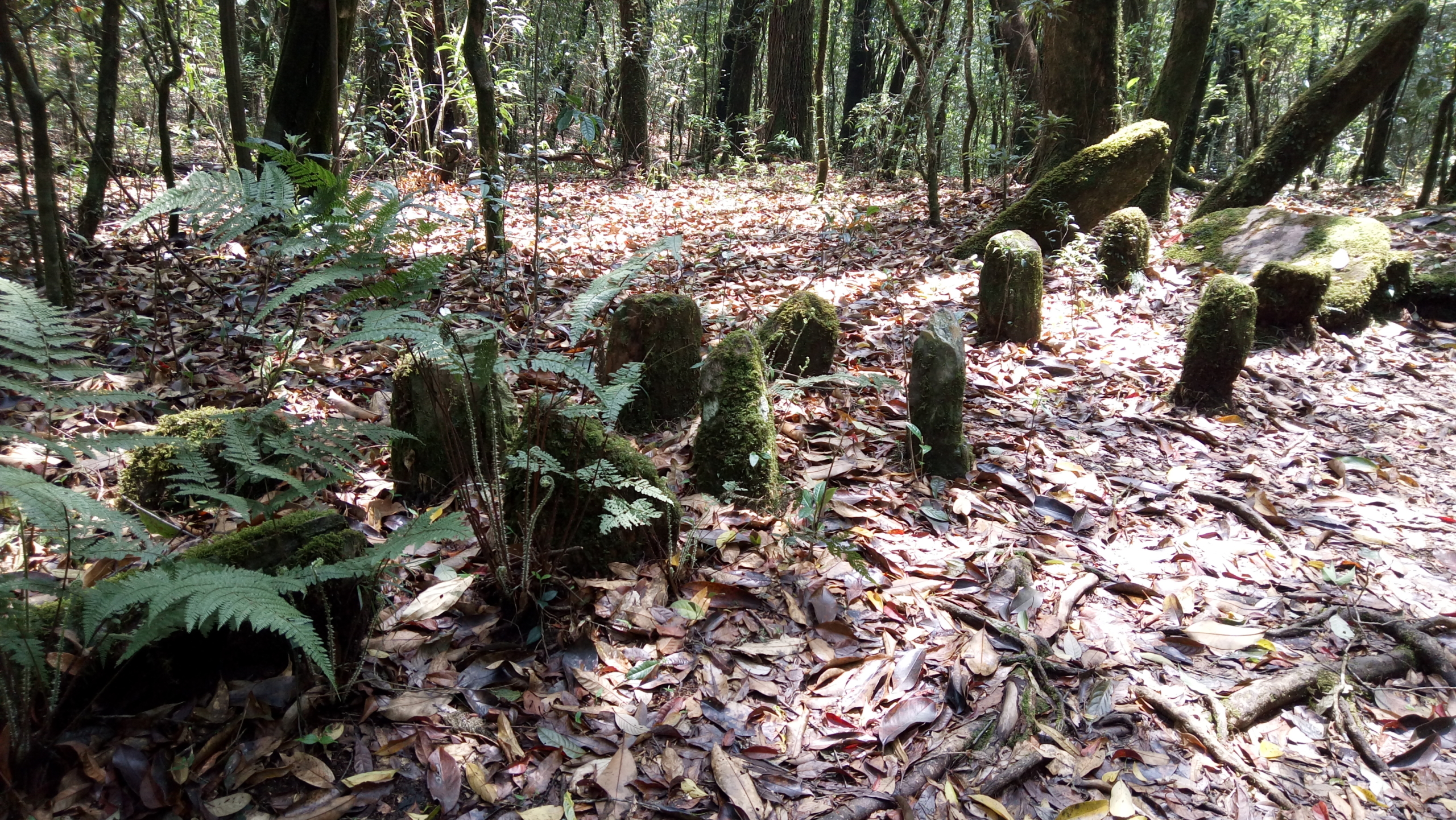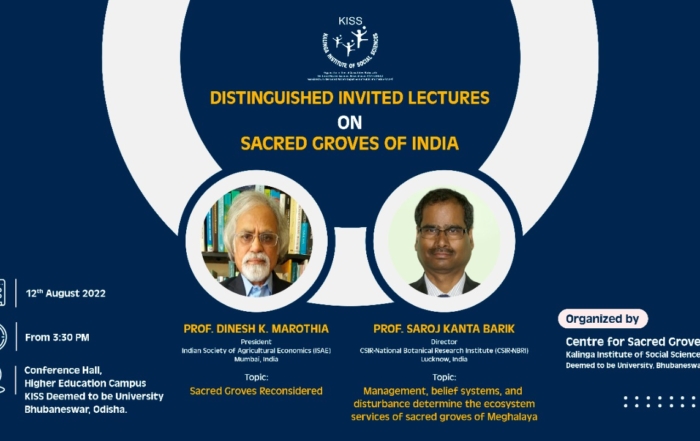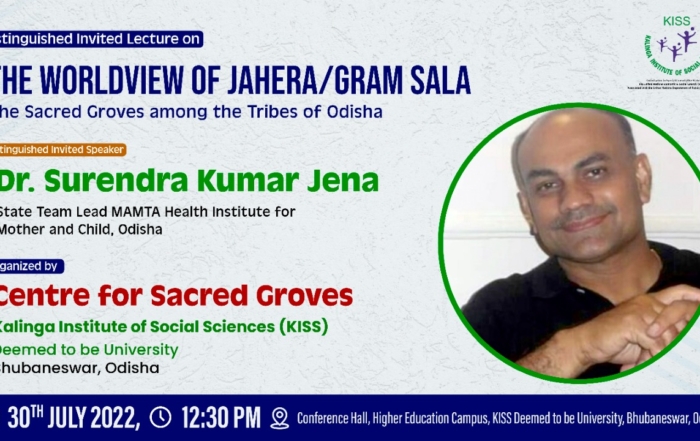Project Description
In a tribal community, the sacred groves are principally the place of worship following folk traditions and rituals dedicated to deities’ and ancestral spirits. The important cultural aspects, ritualistic dances along with folk tales and folk medicines are associated with these groves, quite typical of each tribal community need holistic documentation. KISS-DU, a unique University established for the empowerment of students belonging to different tribes through higher education, is befitting to carry out this aspect of the work through this innovative centre for sacred groves.
International Union for Conservation of Nature defined Sacred Groves as a place where nature is worshipped, hence, traditionally preserved as unadulterated forest patches with strong socio-cultural beliefs. The tribal community associated with such groves are generally illiterate, however, maintain their traditional customs, rituals, ceremonies etc since ancient times without alteration. These are classic examples of the culturally sensitive community-based practice of natural resource management which needs precise documentation and their preservation in situ. These groves are principally a cluster of specific plants, also used as traditional medicines found within a definite area, and conserved near the habitation of a tribal community, hence are of immense importance besides socio-cultural and religious significance.
It is reported that India has more than 100,000 sacred groves, the highest number in the world (Malhotra et al., 2007). In a recent report Rath and Ormsby (2020) stated that Odisha has 1864 sacred groves worshipped by tribal communities of Balasore (13), Keonjhar (290), Kalahandi (148), Kandhamal (77), Koraput (250), Malkanagiri (30), Mayurbhanja (627), Nabarangapur 953), Sambalpur (23) and Sundargarh (353); all the data being taken from the Directorate of Forest and Environment Department, Govt of Odisha, also mentioned that no data available for tribal-dominated Gajapati and Rayagada districts. Besides several sacred groves in non-tribal areas of other districts also documented, however, are of not much relevance being not used for community religious practices/beliefs, most converted to temples, picnic spots etc. at present. The Innovative Centre for Scared groves at KISS-DU will pool its resources including its tribal students of various ethnic communities to obtain first-hand authentic information through field study about these special ecological niches and to preserve them as it is in nature.
Responsibilities and mode of functioning of the Innovation Centre:
Odisha and the nearby Chattisgarh and Jharkhand states have the highest tribal population. In Odisha, their number is 22.8% of the total state population with 62 distinct ethnic tribes each with its own custom, rituals and beliefs centred around the sacred groves, in addition to the pre-agricultural system, economy centred on forest resources and ecosystem services. KISS-DU is the only higher education institution in India dedicated to imparting education to exclusively these ethnic groups, empowering them and also promoting their typical language, tradition, cultural practices, beliefs, rituals etc which will be strengthened through documentation and characterization of the interdisciplinary nature of these sacred groves specific to each ethnic community (Anthropology: human culture – Religion: Spiritual, beliefs, rules, rituals – Ecology: Natural environment and resource conservation).
To achieve the desired objectives the Postgraduate students and researchers of different disciplines of KISS-DU would study the following through well-defined projects involving each ethnic /tribal student group from their own place of habitation/community associated with the sacred groves from their childhood, and practising still, which would bring many unknown as well as authentic facts to the limelight, not possible by visitors to their habitations to collect data.
- District-wise as well as tribal group-wise documentation of sacred groves.
- Documentation of Tribal group-wise beliefs, practices, rituals, myths and cultural aspects practised in/near Sacred groves.
- Studying the sacred grove ecosystem of different sizes in totality.
- Documentation of medicinal plants used by traditional practitioners, their identification and documentation, preparation of herbaria, cultivation in following the original agronomic practices, characterization of active principles, drug preparation and testing, and entrepreneurship development for income generation.
- Identifying the threats to Sacred Groves due to urbanization/cultural inter-mixing/tourism etc and remedial measures for their conservation in situ.
- Biodiversity assessment of sacred groves.
- Endemic plants and associations in sacred groves & their economic/medicinal implications



